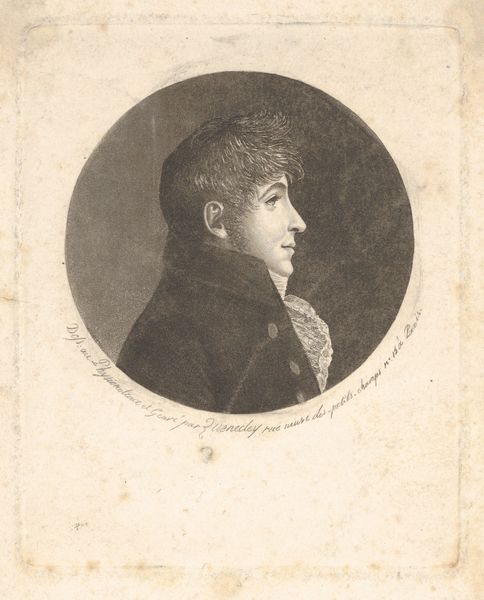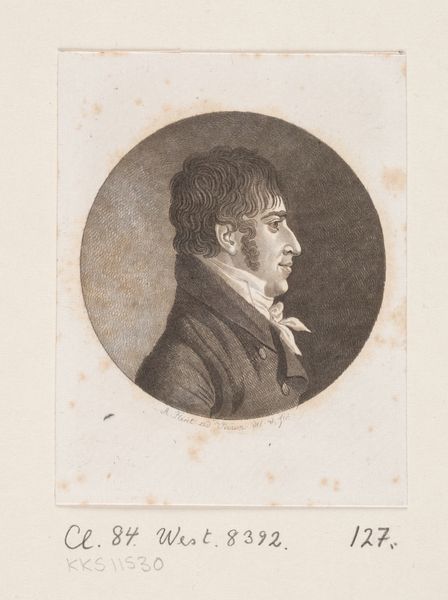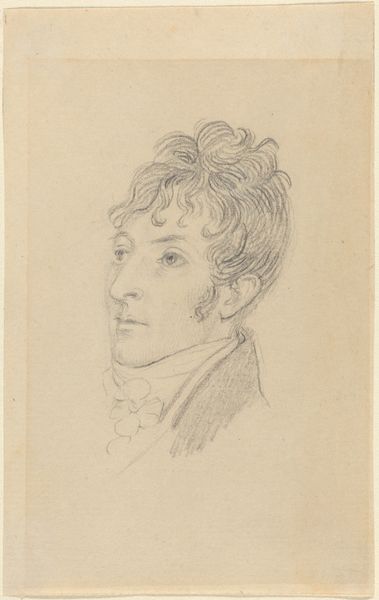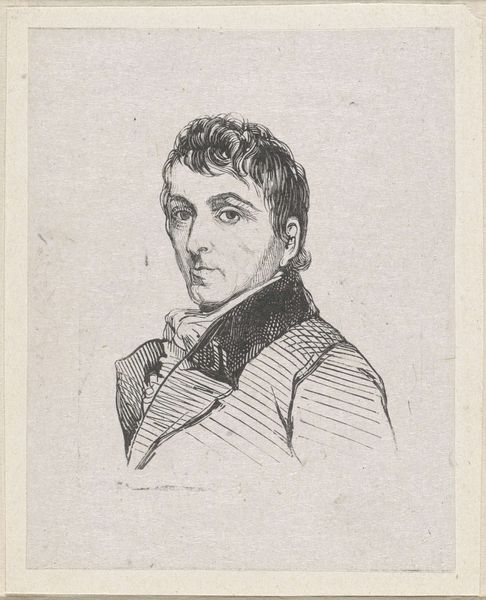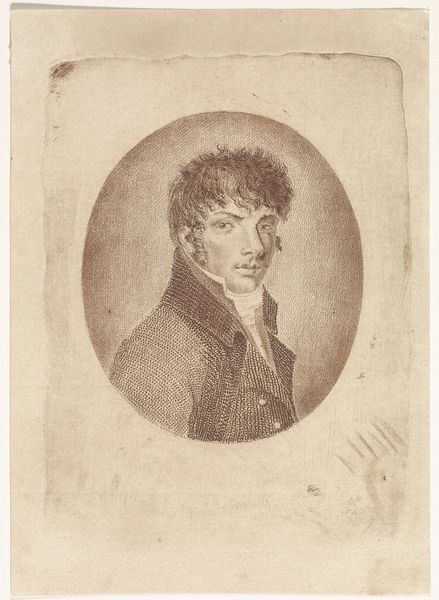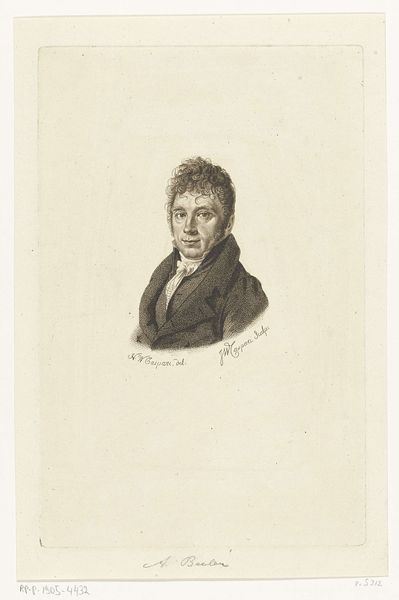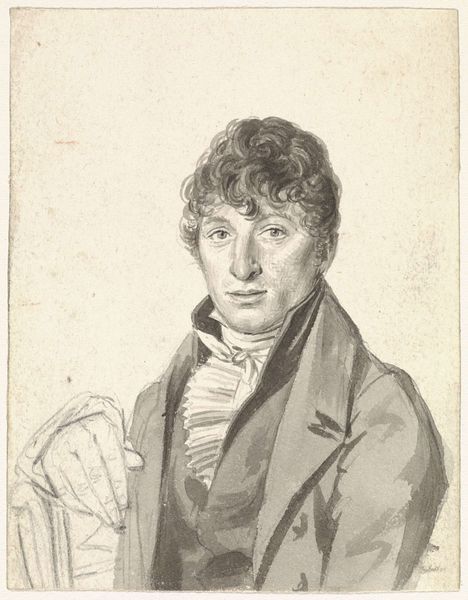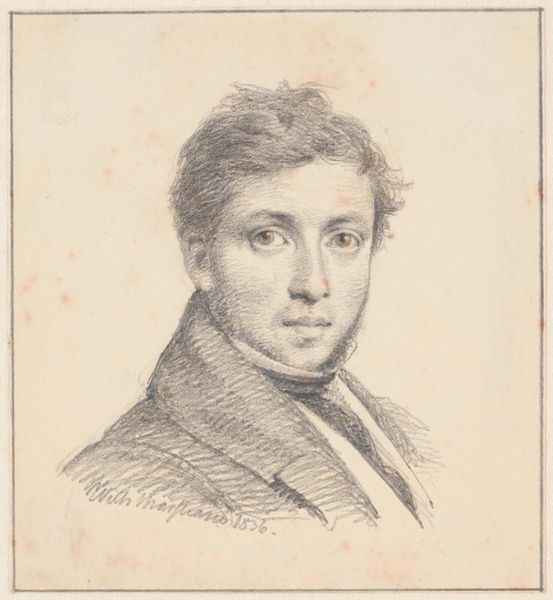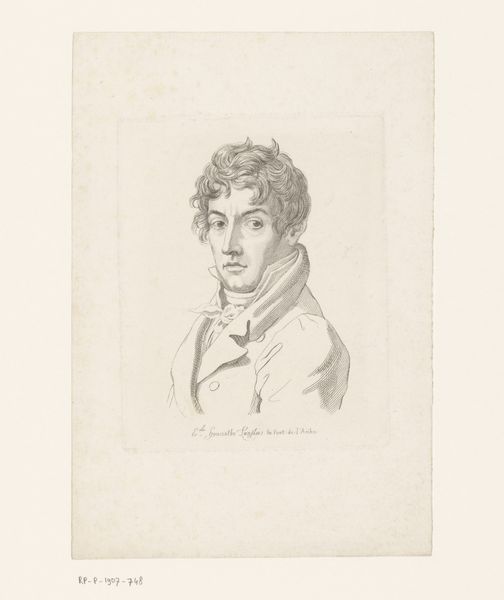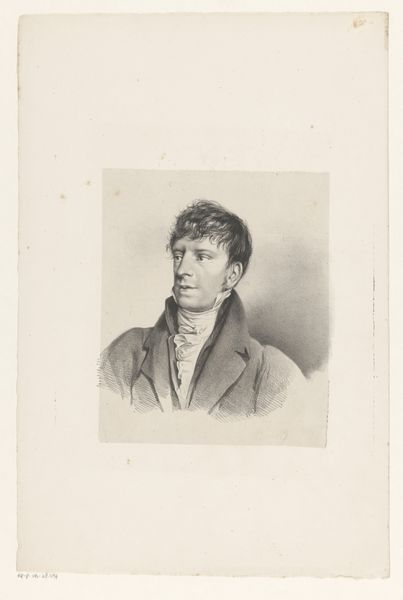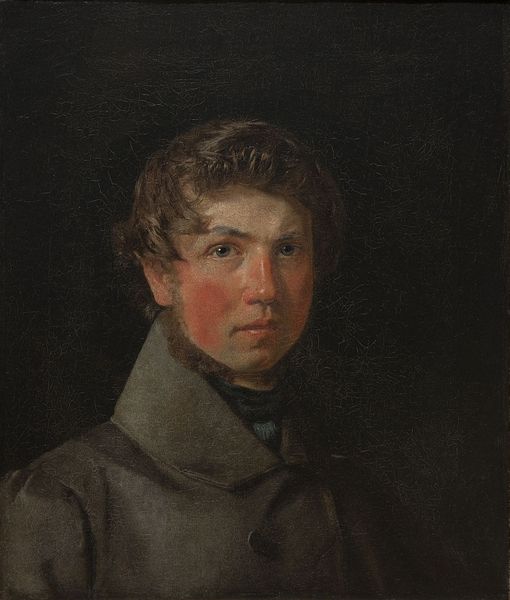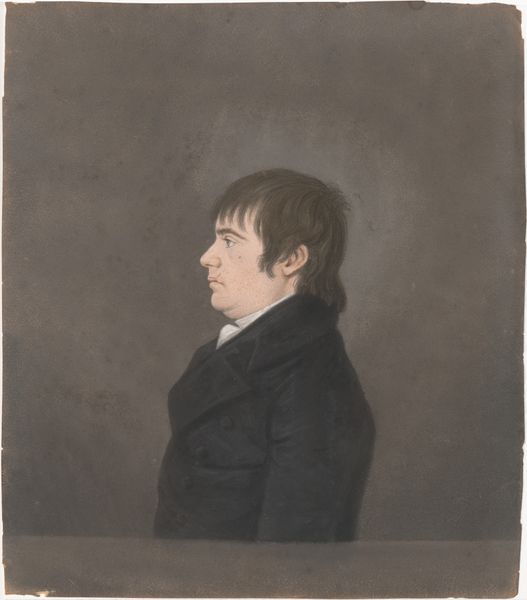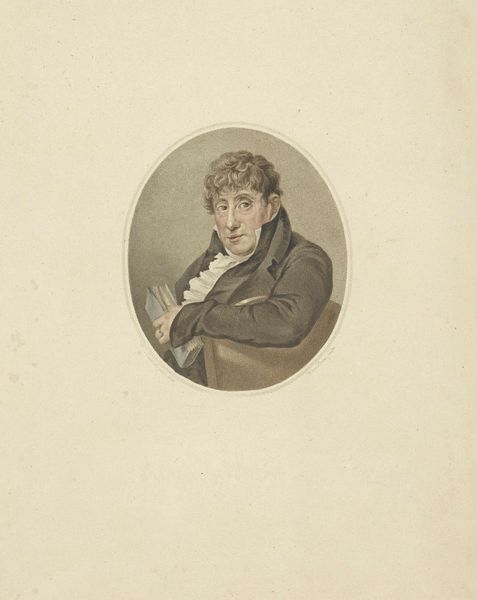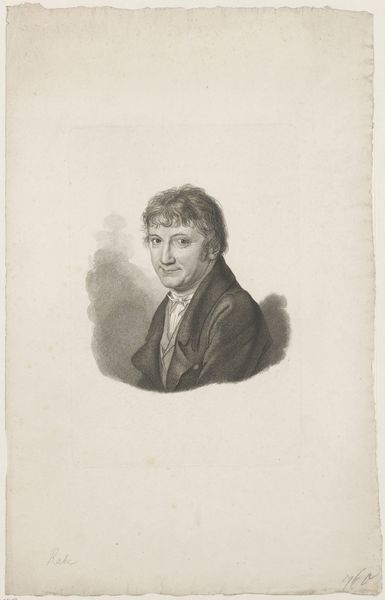
drawing, paper, pencil
#
portrait
#
drawing
#
charcoal drawing
#
paper
#
oil painting
#
romanticism
#
pencil
#
portrait drawing
Dimensions: overall: 24.2 x 21.7 cm (9 1/2 x 8 9/16 in.)
Copyright: National Gallery of Art: CC0 1.0
Editor: So, this is a drawing entitled “Portrait of the Artist’s Father” by Friedrich Wilhelm Moritz. It looks to be a pencil or charcoal drawing on paper. I’m struck by how carefully rendered it is, almost photographic, considering the materials. What should viewers be paying attention to here? Curator: Focus on the materiality, specifically how humble materials—paper, pencil, and perhaps charcoal—were used to create an object that mimics the traditional painted portrait. The labor involved in achieving that level of detail shouldn't be overlooked. What does it mean to emulate oil paint using only graphite? Editor: Interesting! It feels like there’s an inherent commentary on class, almost? Paintings were typically for the wealthy, drawings, maybe more accessible? Curator: Exactly. Think about who could afford painted portraits at this time, and who had the leisure to sit for one. This drawing, by virtue of its medium, potentially opens up portraiture to a different market, different consumers. Consider, too, the social context. The rise of the bourgeoisie created new markets, and art responded. How does that relate to Romanticism, tagged as its style? Editor: Right. Romanticism focused on individual emotion, the everyday… I see it now. The drawing feels much more intimate than a formal painting, perhaps more attuned to this developing middle-class audience. A product intended for individual reflection rather than public display, accessible not just because of its emotional message but also because of its production and cost? Curator: Precisely. We're not just looking at a likeness of a man, but the tangible manifestation of shifts in social power and artistic consumption. Editor: I'm starting to see how deeply the medium and process are connected to the art's social meaning! Curator: It reveals the broader economic and social shifts reflected in artistic choices, shifting from individual craftsmanship to the pre-industrial marketplace. Editor: This has changed my perception of what art can tell us!
Comments
No comments
Be the first to comment and join the conversation on the ultimate creative platform.
